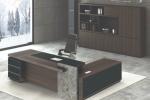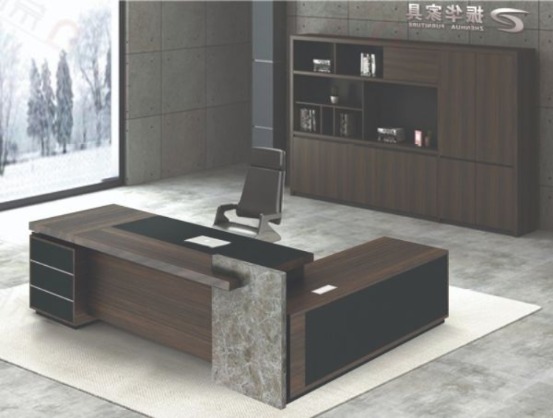Desk Project Drafts - Matters To Check out When Making A Splendid Structure


It'll look better if the stain is less consistent. Be sure to join rails to the non-tapered sides of the legs. It's easiest to rip the parts on a table saw, but you can use a circular saw and a ripping guide. Pair up your boards so when one is laid atop other, there is little or no gap along ends and edges. You could store a wet brush for a few days in water and then wash and use it over and over again. Cut rod and install other wheel assembly. You can only make (https://woodcraftdiagrams.com/diy-office-desk-plans-blueprints) the unit as long as door opening is wide.
Retighten inner nut, install the second wheel and tighten down outer locknut. Transfer the curve drawn on cardboard to make a rainbow-shaped template that serves as the form for bending base's curved pieces. Use a smooth form and you're guaranteed a smooth, uniform tabletop. A little final sanding and the bookcase was ready for finish. The next time a blade breaks or dulls, you won't scratch your head trying to remember where you put the spares. When it's necessary to craft slots perpendicular to edge of a panel-at the back of case bottom, for example-clamp panel to table-saw rip fence and use saw table as a registration surface.
Then nail on the siding with 4d galvanized box nails. Click here to learn how to turn your garage into a storage dream with french cleats. The window seat and shelf above it are optional. Click link below to download and print the template (learn more here) for creating the laptop stand supports. Sand pipes with 100-grit sandpaper, then wipe them down with a rag dampened with mineral spirits. Start edging shelf by cutting the end strips to length. Place a carpenter's pencil between the boards to space them. If one of your side walls is out of plumb slightly, taper of columns would disguise it.
Cut a 2 x 4 to length and screw it to top of 2 x 6 rail to act as a cap. Then carefully flip assembly upside down and attach the base to front and back frames as well. Master it and you'll be amazed at how well your knives perform and how much more fun food prep, carving, slicing and peeling could be. Place these pieces next to saw's blade and butt the fence to them. Cut door frame sides and door frame top and bottom. Be sure to keep guide bushing pressed tightly against the edge of the template.
Five-inch sanders are inexpensive and easy to control. It's perfect if you have old floorboards or other boards that you would like to put to good use. You can also use a router with a flush-trimming bit. Then add dividers, nailing them into place through base and on underside through the shelf. Work your way around disc and rip or adjust the tile spacing to fit the last piece. Glue and insert the plugs into the counterbore holes. To keep them corralled, slice out bottom of a plastic container with a utility knife. Instead of scratching away at the timber fibers, the belt will rip them out.
Complete the stiles by gluing fillets into the grooves. Forstner bit, so you could start the jigsaw blade in handle holes. To finish the assembly, predrill and countersink holes in the ends of the seat slats. Clamped block allows you to make repetitive crosscuts without risking a kickback. After installing first screw, slide unit forward and back, then adjust it until it runs parallel to the cabinet sides and install three more screws. Set the top and the trough covers in place on the base cabinets. Saws that are equipped with vacuum hose connections to keep the pattern rip sightlines free of dust also are a plus.
Glue is used to strengthen the joint but no screws or fasteners are necessary. It begins with a plywood base and is built around a wall cabinet. Repeat the process to make a second curve. Cut the dadoes at front edge of the drawer sides using dado blades in a table or radial-arm saw. You'll be surprised at how much richer the stain looks after a coat of finish. We prefer blades made with hardened teeth that are rip rather than pressed. Install it so the splice would be hidden under column as shown. This style of viking table is known as a drawbore trestle.
A brad nailer is the fastest way to assemble the form. Check for level and adjust by tightening or loosening opposing screws. Make sure it's perfectly straight and level. A belt-cleaning stick would remove the pitch buildup that happens with all woods, especially pine or sappy woods. Then, lay out and rip joining-plate slots in the back panels and in mating edges of the case sides.